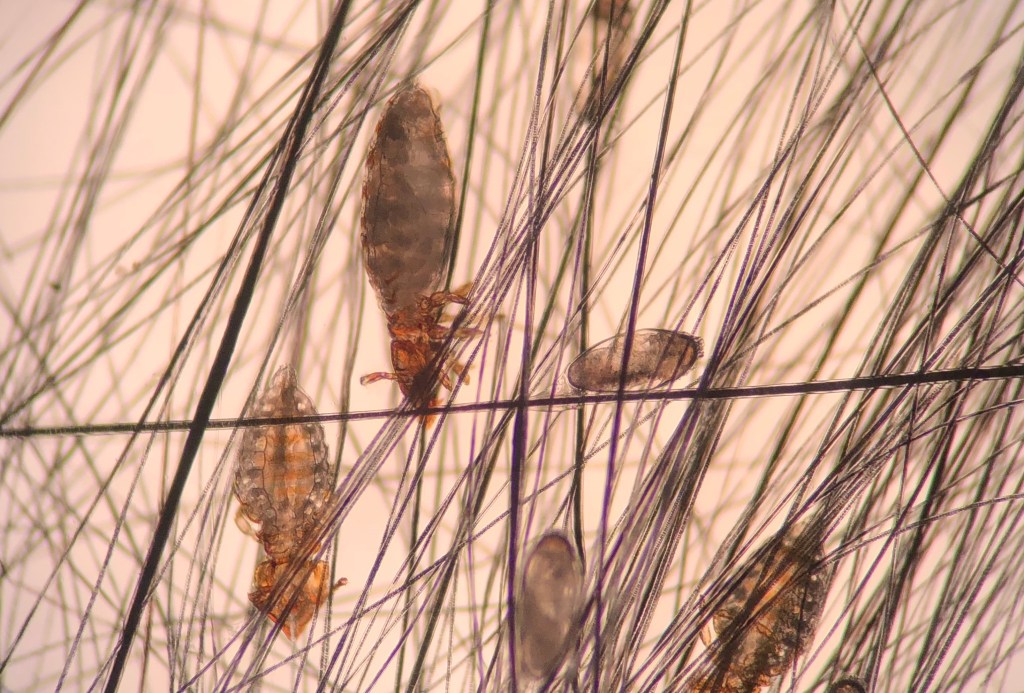Parasites can live in or on our pets. There’s a surprisingly large number of them, and they’re potentially hazardous to the health of our furry friends and family.
But how much do you know about the different type of parasites, and the danger they represent?
Inside or outside? Where to find parasites in dogs and cats
Cats’ parasites (and Dogs’ parasites too) can be split into two vast groups–internal or external. In scientific terms, that’s endoparasites and ectoparasites, respectively.
Endoparasites, which live inside the animal are usually of the wormy variety. Tapeworms, roundworms, hookworm, whipworm, and heartworm all feature.
Healthy pets with just a few worms might show no symptoms at all. But endoparasites can cause anything from upset stomach and coarse coat to severe illness and even sudden death, as is the case for heartworm. Some cat endoparasites are zoonotic and can put people at risk.

Ectoparasites on parade–the usual suspects
In cats the external parasites are of greatest concern. Let’s take a brief look at what they are, and the threats they pose.
Sandflies are widely spread in southern Europe and carry a protozoan parasite responsible for causing leishmaniosis. For dogs, sandflies are a serious and life-threatening carrier of disease that can affect humans. Did you know that, even though sandflies are mostly found in southern Europe, they have been recently discovered in northern European countries such as Germany?
Ticks are a group of bloodsucking external parasites parasites that includes a dozen different species. Some important ticks in Europe are the castor-bean tick Ixodes ricinus, by far the most common; the meadow tick Dermacentor reticulatus, which transmits many grave diseases; and the brown dog tick Rhipicephalus sanguineus, the only tick species that can reproduce indoors. These parasites that belong to the same class as spiders are of particular concern because of the diseases that can be transmitted from their bites to both people and pets, such as Lyme Disease (borreliosis). They are becoming less seasonal in many parts of the world, including Europe, and may soon be an all-year-round threat. Parasite expert Christina Strube has commented:

“ONE OUT OF FIVE TICKS WE HAVE SEEN CAN BE A CARRIER OF SOME ILLNESS”
Fleas are wingless and blood-sucking little insects, with a flattened body on the sides,that can jump 160 times their body length with their powerful legs! Fleas occur across Europe with the exception of northern Scandinavia and the highest points of the Alps and the Pyrenees. They are particularly common among cats, dogs and small mammal pets, but they can also be found on birds. Fleas cause itching and scratching, and they also bite people which is of particular concern as they can carry diseases that infect both people and animals, such as bartonellosis or cat-scratch fever. These parasites can be very distressing for the pet and the owner, so they can erode your relationship with your pet.
Since fleas can survive indoors, they can infest your home and be very difficult to get rid of. In fact, only adult fleas live on pets, spending 95% of their life as immature fleas, hiding and lurking in your home. To ensure your home and your family are safe, year-round flea control is required.
Mites are a diverse group of external parasites that cause mange in pets and people. Mostly, they cause skin lesions of varying degrees of seriousness. These can occur anywhere on your pet, but some types of mites attack specific areas of the body, such as the ears.
Lice come in two different types– sucking and chewing. The former are blood-suckers and infestations can potentially cause anemia. Heavy chewing louse infestations cause skin lesions. In addition, some lice can carry and transmit tapeworms.

Know the risks of parasites to protect your dogs and cats
Educating yourself about the risks of parasites is a good way to help protect the health of your cats and dogs.
Start with a video from pet expert René Bodker on the sometimes-surprising places you’ll find ticks.
For more in-depth information on many of the risks facing our pets which are being accelerated by rising temperatures worldwide —and how you can keep your pets protected— please download and read our Parasites guide.
Looking for a Vet?
Your veterinarian plays a big role in your pet’s health. Input your location information and get a list of veterinarians near you.
Find A Vet Near Me





 Go To United States
Go To United States Austria
Austria Belgium
Belgium Czech Republic
Czech Republic Denmark
Denmark Europe
Europe Finland
Finland France
France Germany
Germany Greece
Greece Hungary
Hungary Ireland
Ireland Israel
Israel Italy
Italy Netherlands
Netherlands Norway
Norway Poland
Poland Portugal
Portugal Romania
Romania Slovakia
Slovakia Spain
Spain Sweden
Sweden Turkey
Turkey United Kingdom
United Kingdom